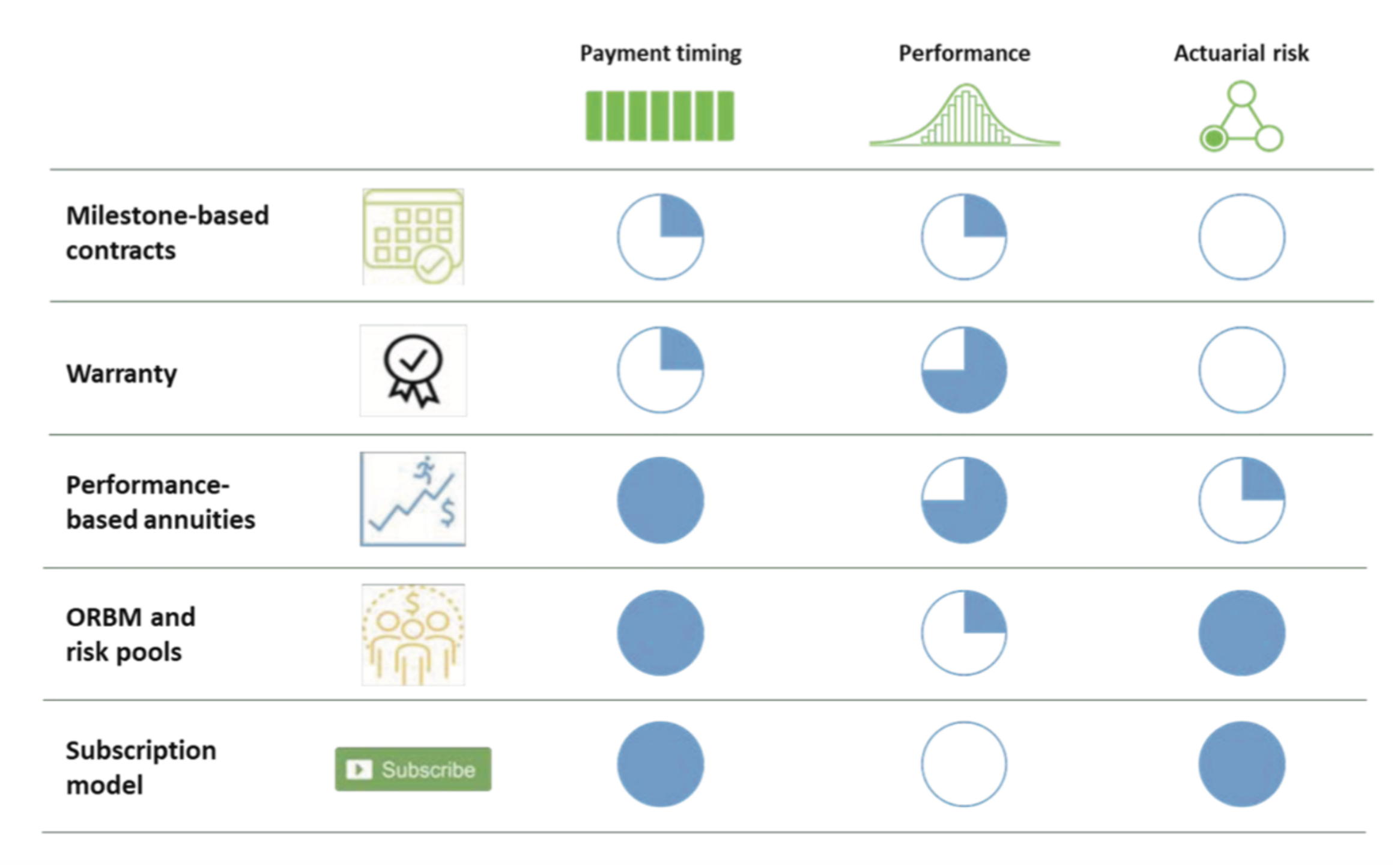Selecting Precision Financing Solutions
These innovative financing tools for cell and gene therapy (CGT) are not one-size-fits-all. Payers will need to determine which tool best fits their particular circumstances. FoCUS stakeholders also identified a number of considerations required for implementing CGT finance tools. This page describes key issues for providing patient access to therapies and employing Precision Financial Solutions..
FoCUS has defined three key questions for payer consideration in selecting a Precision Financial Solution:
Actuarial risk: Can your organization absorb the financial impact in total, given your risk tolerance and current risk management approaches?
A key question is whether your plan can manage the actuarial uncertainty associated with the potential number of patients and medicine costs in the timeframe they are expected. Such actuarial uncertainty will be larger for health plans with smaller books of business and smaller self-insured employers.
While the largest payers may be able to handle the risk internally, additional risk management solutions could help other payers mitigate their actuarial risk, reducing variability by increasing the effective number of covered lives across which risk is spread. Payers should consider whether their current actuarial risk management and risk pooling strategies will meet their future needs. Commercial insurers and self-insured employers who pool through reinsurance or stop loss will want to reassess their current level of risk coverage and ensure that their secondary insurance carriers do not exclude such transformational treatments or the patients that could benefit from them.
Payment timing: Can your organization absorb the financial impact in the timeframe it is expected?
Projected estimates of per member per month (PMPM) cost can be made from the CGT pipeline for an expected plan impact. (See pipeline workbook). Such estimates can be used to assess whether a plan can manage the financial impact of the medicine in the timeframe it is expected.
Note, these estimates do not take into account any cost-offsets from existing therapies that might be displaced by these treatments or subsequent medical, pharmaceutical, or other benefits or cost savings that might be achieved. Key questions in evaluating payment timing include:
- Given the costs/PMPM, would the financial impact be higher than your organization can absorb in any year?
- Would any short-term surge effect due to treating a significant prevalent disease population be a challenge for your organization?
Therapeutic performance risk: Does your organization wish to include performance requirements for CGTs?
There are two reasons why organizations may wish to establish performance guarantees for therapies. First, there may be uncertainty as to the expected initial performance of a new treatment, and second, further concerns as to the durability of therapy performance. A performance guarantee can help bridge this gap.
Should an organization wish to address actuarial risk, payment timing, or therapeutic performance risk with one of the Precision Financing Solutions, additional consideration is required for implementing the financial solution. Each solution may have different implementation concerns—those related to the administration and management of a therapy and those related to carrying out the Precision Financing Solution.
Key therapy administration and management challenges:
- Treatment facility requirements
- Center of Excellence requirements
- Geographic coordination challenges
- Provider reimbursement development and contracting
- Pre- and post-treatment clinical care requirements
You can read more on these topics in the delivering access to CGT section.
Key financing solution challenges:
- Actuarial capabilities and risk acceptance
- Developer performance-based contracts
- Identification of performance metrics
- Collection of performance data
- Patient tracking over time
- Patient mobility management
- Evaluation of collected data to performance criteria
- Collection of any performance-based rebates and/or payments
In summary, payers are developing strategies to address the financial risks seen with high-cost durable and curative therapies. No one financial solution addresses all risks, as depicted in the figure below. Key questions to consider in the selection of a solution therefore include:
- What actuarial, payment, and performance risks does the organization face that aren’t addressed by its existing structures?
- What precision financing solution(s) can address that gap?
- What resources are needed to implement and use that financial solution?

Figure: FoCUS precision financing solutions and their ability to address key risks
(Blue circles represent the proportion of the associated challenge addressed)